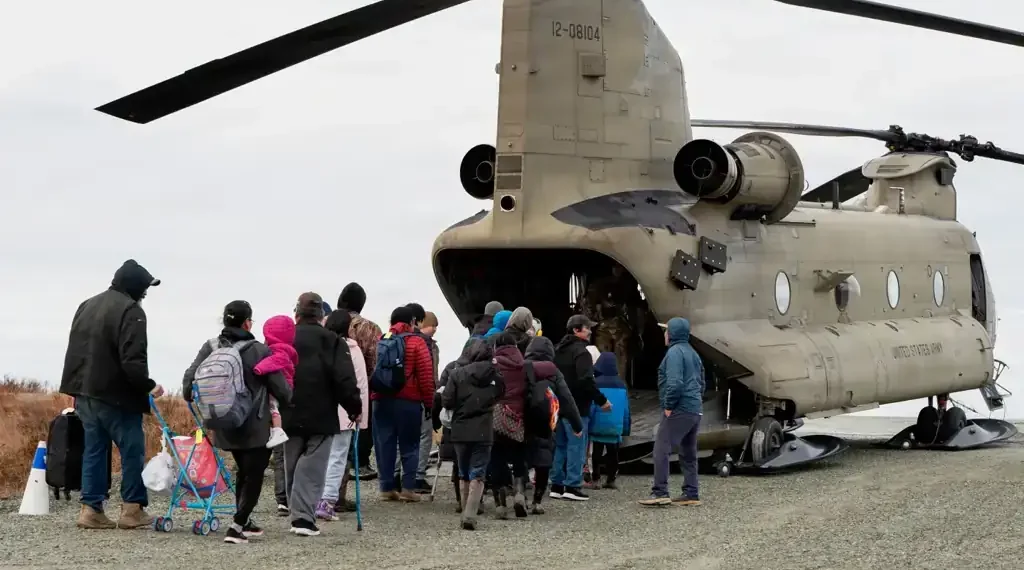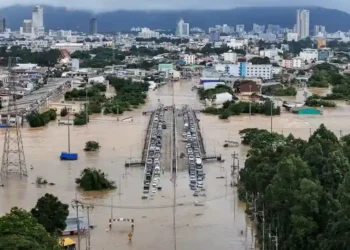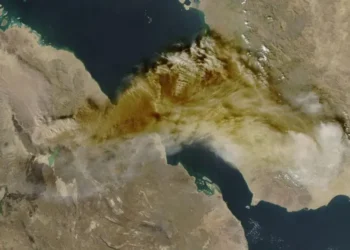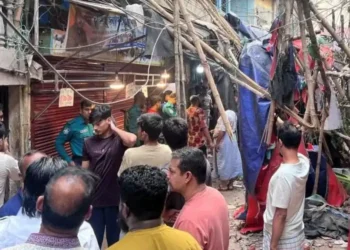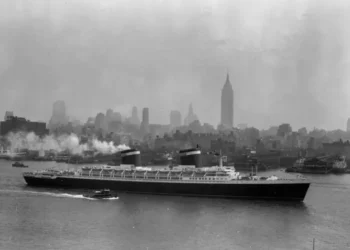Published: October 18, 2025, 22:35 EDT
Severe flooding caused by the remnants of Typhoon Halong has left parts of western Alaska in ruins, displacing more than 2,000 residents and destroying hundreds of homes. State officials warn that rebuilding could take at least 18 months, as emergency shelters fill and recovery efforts continue across the region.
Widespread Destruction Across Isolated Communities
Governor Mike Dunleavy said in a request for a federal disaster declaration that damage in the hardest-hit villages was “catastrophic.” In Kipnuk, initial assessments found 121 homes—about 90% of all residences—destroyed. Nearby Kwigillingok lost more than one-third of its homes, with some structures swept away entirely.
The storm, which struck last weekend with winds equivalent to a Category 2 hurricane, sent massive waves crashing into low-lying coastal areas. “The destruction is extreme,” Dunleavy said, confirming one death and two missing persons. Dozens were rescued as rising waters lifted homes off their foundations.
The governor urged swift federal assistance to help displaced Alaska Natives and rebuild vital infrastructure. “Due to geography and weather, many survivors will be unable to return to their communities this winter,” he wrote, describing conditions as “America’s harshest climate in the Arctic.”
Thousands Evacuated by Air as Emergency Shelters Fill
Rescue operations have continued throughout the week. More than 2,000 people have been evacuated to safer areas, including schools in nearby towns and temporary shelters in Anchorage.
Anchorage Mayor Suzanne LaFrance said the city expects to receive as many as 1,600 evacuees. So far, around 575 have arrived, airlifted by the Alaska National Guard and accommodated in a sports arena and convention center. Additional flights were scheduled through the weekend.
State and federal officials are coordinating efforts to transition people from emergency shelters into temporary housing such as hotels, and eventually into long-term residences as reconstruction begins.
Federal Aid Request and Congressional Support
Dunleavy’s formal disaster request to the White House seeks immediate federal funding to repair public infrastructure and support displaced families. The state’s congressional delegation jointly urged President Donald Trump to approve the declaration quickly, emphasizing the need for emergency grants and rebuilding aid.
Federal agencies, including the Federal Emergency Management Agency (FEMA) and the Coast Guard, are already providing search and rescue, environmental response, and logistical support. A full disaster declaration would open broader funding for both immediate and permanent recovery projects.
A Region Cut Off and Struggling to Adapt
The storm surge struck a sparsely populated stretch of Alaska’s western coast, far from the state’s main road system. Many affected villages—reachable only by air or boat—depend heavily on subsistence hunting and fishing. The sudden relocation to urban centers represents a profound cultural and lifestyle shift for many evacuees.
Alexie Stone, a resident of Kipnuk, arrived in Anchorage with his family aboard a military aircraft after floodwaters destroyed their home. “We’re starting a new life here in Anchorage,” he said. “It’s going to be about finding a place and a job.”
Stone and hundreds of others are being housed temporarily at the Alaska Airlines Center at the University of Alaska Anchorage, where the Red Cross has set up cots, blankets, and hygiene supplies.
Community Solidarity Amid Displacement
Local leaders in Anchorage have emphasized solidarity with those displaced by the disaster. “Our neighbors in western Alaska have experienced tremendous loss, devastation, and grief,” Mayor LaFrance said. “We will do everything we can to welcome them and help them through these difficult times.”
State Representative Nellie Unangiq Jimmie, from Toksook Bay, described her own harrowing experience enduring 100 mph (161 km/h) winds. “We had no choice but to sit in our home and wait to see if it would come off its foundation,” she told the Anchorage Assembly.
While her home survived, she said others in her district were not as fortunate. “Even if they are far from home, this is still Alaska land,” she said, thanking Anchorage residents for their support.
Long Road to Recovery
Officials estimate that rebuilding efforts will extend well into 2027. Remote geography, frozen terrain, and the short Arctic construction season will make reconstruction particularly difficult. Engineers must first assess whether certain villages remain habitable at all, given severe coastal erosion and infrastructure collapse.
In his appeal, Governor Dunleavy emphasized that “rapid repairs” are underway but warned that some areas “may not be viable for winter occupancy.” For now, the priority remains providing shelter, food, and stability for displaced families.
Residents like Stone face an uncertain future as they begin adjusting to life away from home. “It’s not easy,” he said. “But we’re alive, and that’s what matters now.”
This article was rewritten by JournosNews.com based on verified reporting from trusted sources. The content has been independently reviewed, fact-checked, and edited for accuracy, neutrality, tone, and global readability in accordance with Google News and AdSense standards.
All opinions, quotes, or statements from contributors, experts, or sourced organizations do not necessarily reflect the views of JournosNews.com. JournosNews.com maintains full editorial independence from any external funders, sponsors, or organizations.
Stay informed with JournosNews.com — your trusted source for verified global reporting and in-depth analysis. Follow us on Google News, BlueSky, and X for real-time updates.
